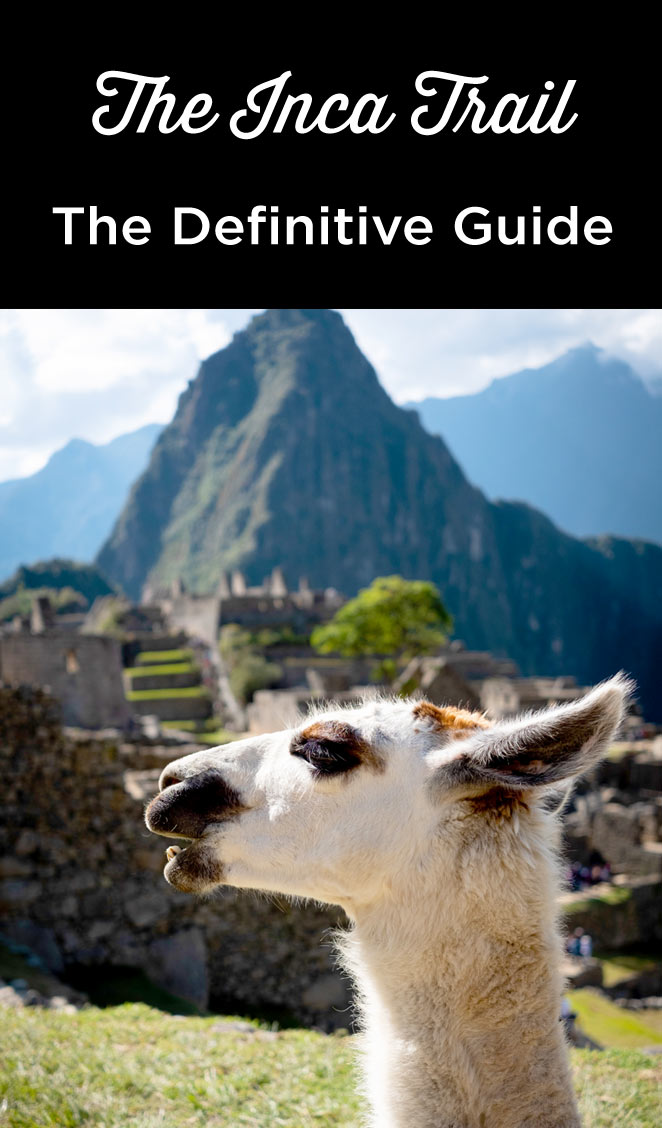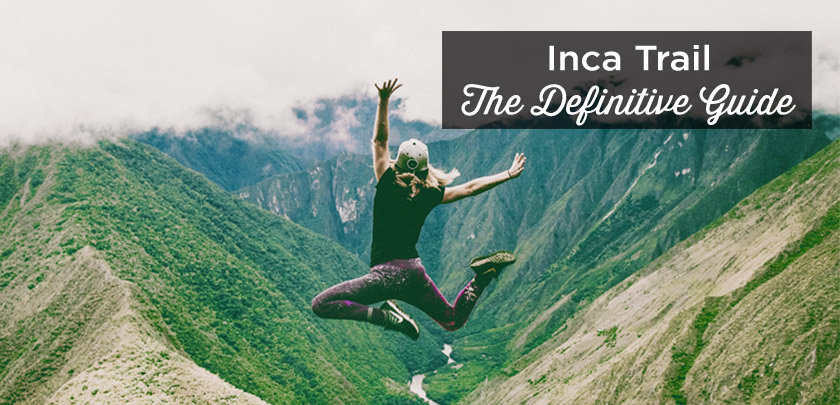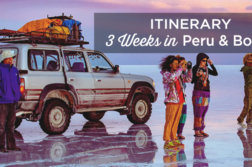Hiking the Inca Trail: What to Know Before You Trek to Machu Picchu
Planning a trip to Peru and want to experience the most epic route to Machu Picchu? The legendary Inca Trail is the ultimate adventure you won’t want to miss.
This iconic trek combines stunning mountain landscapes, cloud forests, and Inca archaeological sites, all leading up to the Sun Gate and your first magical view of Machu Picchu.
In this complete guide to the Inca Trail, you’ll find a detailed day-by-day itinerary, essential tips for altitude and difficulty, weather info, and everything you need to know about permits, packing, and how to book your trek.
Ready to hike the Inca Trail to Machu Picchu? Let’s dive in!
Sommaire
What is the Inca Trail?
During the time of the Inca Empire, a vast road network known as the Qhapaq Ñan stretched over 18,000 miles across Peru, Ecuador, Bolivia, Chile, and Argentina.
Today, the most famous part of that network is the Inca Trail to Machu Picchu (known in Spanish as Camino Inca), a legendary trek that allows you to walk in the footsteps of the Incas on their way to the sacred citadel.
What is the Inca Trail route?
The classic Inca Trail trek lasts 4 days and 3 nights (camping), but there is also a shorter 2-day version with an overnight stay in a hotel in Aguas Calientes.
Here’s a detailed look at both options:
Inca Trail – 4 Days
- Overview: 4 days and 3 nights of camping, covering a total of 26 miles. The adventure begins with pickup from your hotel in Cusco and transfer to Km 82, the official start of the trail. On day 4, you’ll arrive at Machu Picchu through the famous Sun Gate (Inti Punku).
Day 1: Cusco – Km 82 – Llactapata – Huayllabamba – Yuncachimpa (7.5 miles / approx. 7 hours)
Early departure by bus from Cusco to Ollantaytambo, a town recognized by UNESCO as a World Heritage Site. After a short stop, the journey continues to Kilometer 82, where the trek begins.
You’ll visit the lesser-known but fascinating Llactapata archaeological site, which was properly explored only in 2003. Though not much is known about it, it’s believed to have played an important role along the Inca Trail.
You’ll then follow the Cusichaca River, passing through the small village of Huayllabamba before ascending to the Yuncachimpa camp (10,830 ft) for your first night under the stars.
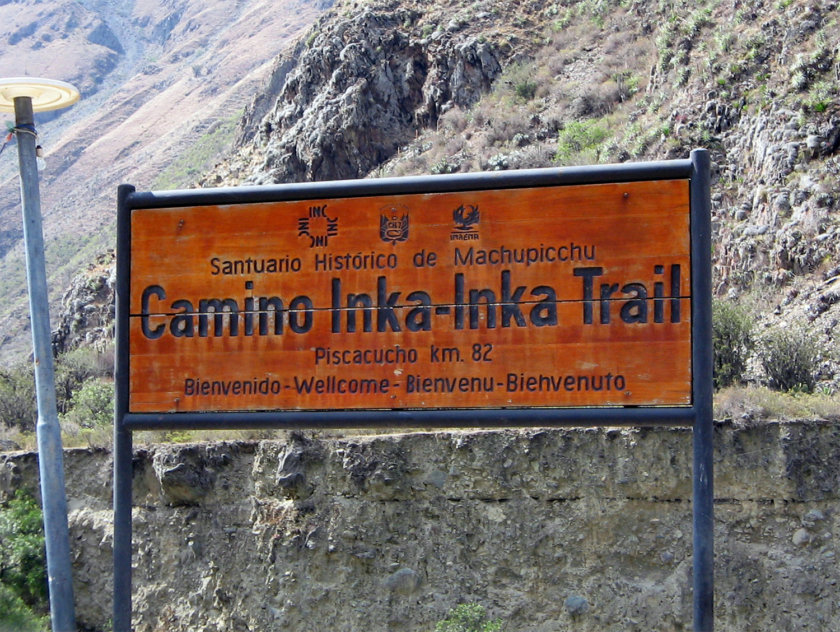
Day 2: Yuncachimpa – Warmihuañusca – Pacaymayu – Runkurakay Pass – Chaquicocha (9 miles, 8h)
The day begins with a 4-hour climb to Warmiwañusca pass (13,780 ft.), going through the Llulluchapampa valley, the most difficult part of the trek.
After that, it is time to descend to the Pacaymayo River before climbing to the archaeological site of Runkurakay, a circular complex that served as a relay for Inca messengers.
The trail continues to the ruins of Sayacmarca, a small town located on the edge of a cliff and offering a magnificent view of the surroundings, and then Chaquicocha, the camp for the night.
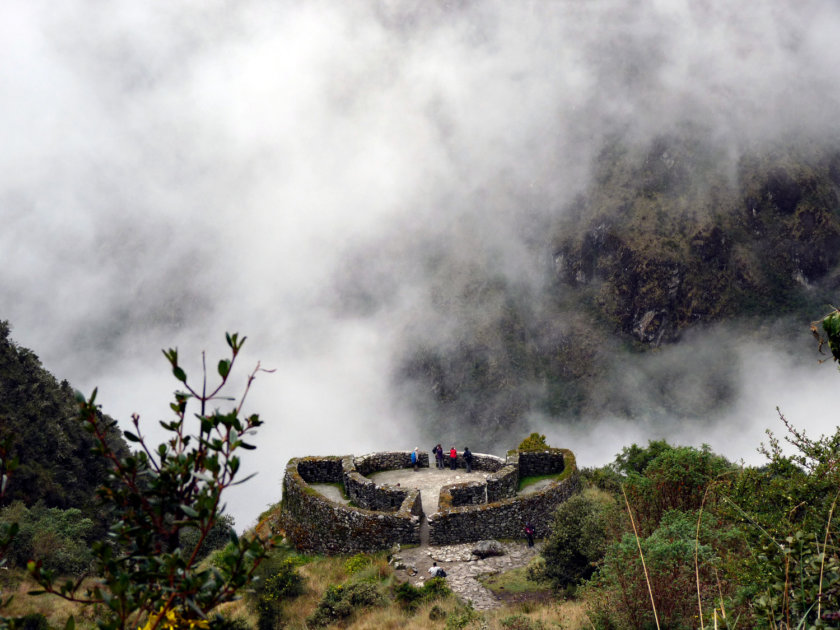
Day 3: Chaquicocha – Phuyupatamarca – Wiñayhuayna (5.5 miles-5h)
This is a day that offers a particularly beautiful landscape (small lagoons, Inca tunnel, rainforest).
First we´ll arrive at Puyupatamarca, “city in the clouds” in Quechua, a well-preserved site on the edge of a ravine that offers a view of the Urubamba River valley and contains plazas, buildings, bridges and baths.
Next comes Wiñay Wayna “eternally young” in Quechua, located on a rocky knoll. It is an Inca site divided into two sectors, formed by agricultural terraces and buildings, connected by a staircase.
This will be the camp for the night.
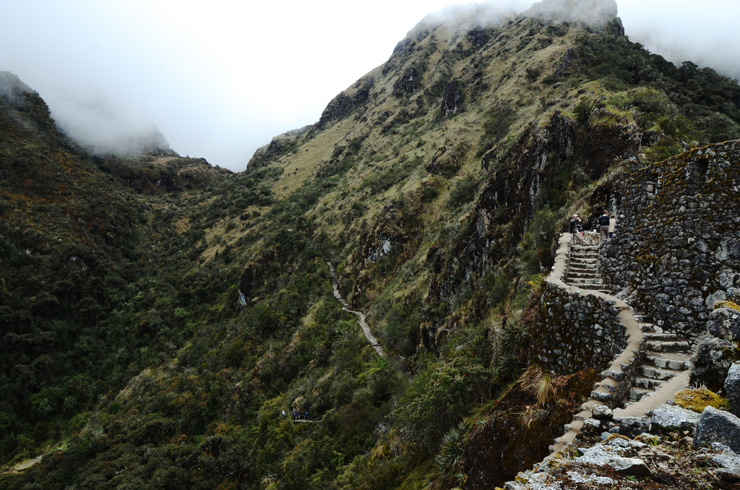
Day 4: Wiñay Wayna – Machu Picchu (4 miles / approx. 2.5–3 hours)
The final stretch begins very early—around 4:30 a.m.—with headlamps lighting the way. You’ll hike toward the legendary Inti Punku, the Sun Gate, where you’ll witness the unforgettable sunrise over Machu Picchu and Huayna Picchu.
After about an hour of descent, you’ll finally arrive at Machu Picchu and begin your guided tour of the ancient Inca citadel.
Once the visit is complete, take the bus back to Aguas Calientes, followed by the train to Ollantaytambo, and a bus to Cusco.
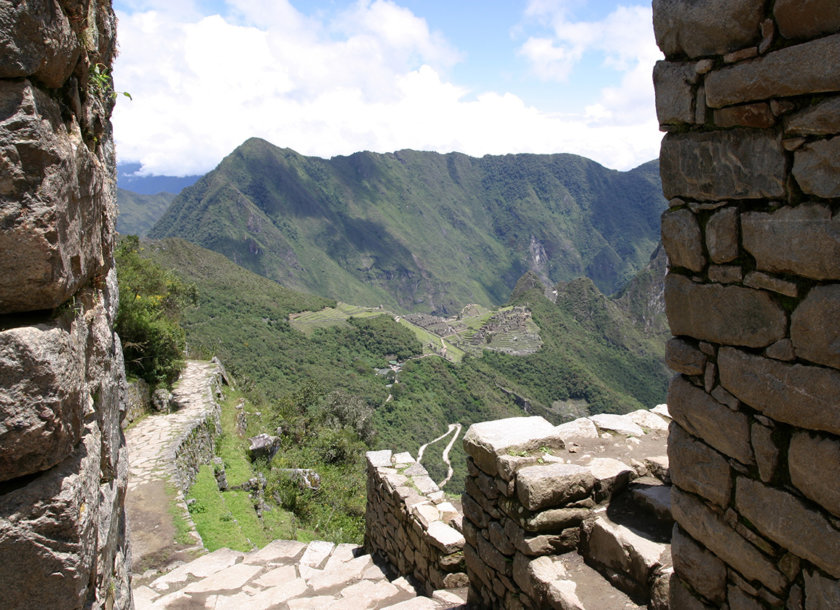
Inca Trail – 2 Days (the short version)
There is also a short version of the Inca Trail, a great option for travelers who have limited time in Peru or prefer not to commit to the full 4-day trek.
- Overview: About 6 miles over 2 days and 1 night. You’ll spend the night at a hotel in Aguas Calientes, with the visit to Machu Picchu scheduled for the second day.
Day 1: Cusco – Km 104 – Aguas Calientes
Morning departure by train from Cusco to Kilometer 104 (Mile 64.5), the official starting point of the short Inca Trail. From here, you’ll begin a 6-mile hike through the Sacred Valley’s breathtaking landscapes.
You’ll first stop at the Chachabamba archaeological site, discovered in 1940. Its construction style suggests it served both as a religious site and a checkpoint before entering Machu Picchu.
After a 3-hour uphill climb, you’ll reach Wiñay Wayna, which means “forever young” in Quechua—named after the abundant orchids in the area. Built into the slopes of the Urubamba Valley, this site offers stunning panoramic views.
Following lunch, the hike continues toward Inti Punku—the iconic Sun Gate—where you’ll enjoy an unforgettable view of Machu Picchu at sunset.
This gate once served as the main entrance to the citadel and was an important site of worship for Inti, the Inca Sun God.
From there, you’ll take the bus down to Aguas Calientes to rest for the night.

Day 2: Machu Picchu – Cusco
Early in the morning, take the bus up to Machu Picchu and enjoy the calm atmosphere of the citadel before the crowds arrive.
After your guided tour of Machu Picchu, you can either hike up to Wayna Picchu or Machu Picchu Mountain or head back down to Aguas Calientes for lunch and some rest before returning to Cusco.
- Important: If you want to climb Wayna Picchu or Machu Picchu Mountain, you must let the agency know when you book your Inca Trail Trek. Spots are limited and once the ticket is issued, it cannot be changed.
After lunch, take the train back to Cusco—the perfect way to end your Inca Trail adventure!
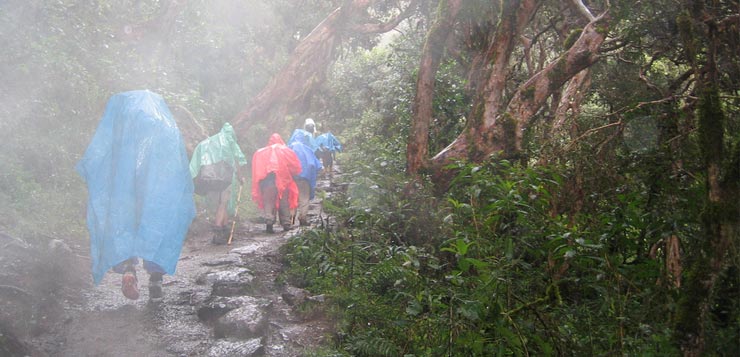
Is it possible to do the Inca Trail without a guide (on your own)?
No, it’s not possible. Since 2001, it has been mandatory to hike the Inca Trail with a licensed agency.
Strict regulations are in place to ensure safety, and checkpoints are located along the trail. Agencies must renew their official permits every year.
This permit guarantees that guides are certified professionals, equipped with proper gear, first aid kits, and reliable communication systems.
Of course, this also helps protect the archaeological site and support sustainable tourism.
Booking the Inca Trail: Everything You Need to Know
Do I have to book in advance?
Yes — booking the Inca Trail several months in advance is essential, even in low season.
The number of spots is limited to 500 people per day (including guides and porters), leaving only around 300 spots for travelers.
Because this trek is world-famous, spaces sell out very fast.
Which agency should I choose for the Inca Trail?
This is one of the most common questions I get.
The Inca Trail is the most popular trek in Peru and one of the most iconic hikes in South America, so many agencies offer it — and the quality varies a lot.
Be cautious with agencies that offer very cheap prices.
- If the price is much lower than the average, it’s often because the agency underpays porters, forces them to carry excessive weight, or uses poor-quality camping gear. Be a responsible traveler and avoid supporting this.
That’s why I only recommend booking with a trustworthy agency that’s known for its ethical practices and quality service.
You can book your 4-day Inca Trail trek here:
To book the short 2-day version of the Inca Trail, click below:

During the Trek: Practical Information
Is the Inca Trail difficult?
You’ll be walking between 5 to 7 hours per day, often on steep or uneven terrain.
You don’t need to be an athlete, but you do need good endurance. The altitude, stairs, humidity, and elevation gain can make certain sections more challenging.
To prepare, it’s a good idea to train with your hiking boots and practice carrying your backpack with some weight beforehand.
But don’t worry — even slower hikers make it to camp before nightfall, and the guide always stays with the last person in the group.
Do I have to carry my own luggage on the Inca Trail?
No. Porters take care of carrying tents, food, and cooking gear.
You’ll only need to carry your personal belongings and your sleeping bag (usually provided by the agency), unless you hire an extra porter (up to 13–15 lbs).
Hiring a porter means you’ll just carry a small daypack (camera, water, sunscreen, etc.), which can make the trek much more enjoyable depending on your physical condition and budget.
Important: You must request the extra porter when booking, as porter permits are also limited by the trail quota.
Your large luggage (suitcases, etc.) will stay in Cusco or the Sacred Valley. Most hotels will store your luggage for free, and if not, your agency will assist you.
What is the altitude of the Inca Trail?
The highest point of the classic 4-day Inca Trail is Warmiwanusqa (Dead Woman’s Pass), which rises to an altitude of 13,780 feet (4,200 meters).
You’ll reach it on Day 2 after a 4-hour climb — the most difficult part of the trek. From there, you’ll descend toward the Pacaymayo River and continue to the archaeological site of Runkurakay at 12,875 feet.
After this point, the route becomes more gradual and easier to manage as you approach Machu Picchu.

What level of comfort can I expect?
You will sleep in a tent (usually 2 people in a 4-person tent, so it is quite spacious).
You will be given a small mattress for the floor, but you can also bring your own if you wish. Comfort is basic, but that is part of the adventure.
Are there toilets on the route?
In recent years, much progress has been made in terms of sanitation. Several toilets with running water have been placed along the Inca Trail, including the main campsites.
There are garbage cans for disposal of residues.
Bring a roll of toilet paper and hand sanitizer.
What if something happens to me in the middle of the march?
Of course, it is your responsibility to inform the agency in advance of any health-related problems before booking the Inca Trail (allergies, heart problems, etc.).
The guides always carry a first aid kit, including oxygen, and are trained to respond quickly.
It is very rare that a person needs to be evacuated, but if necessary, the team will take care of it getting you back to Cuzco.
How many people are in a group?
Depending on the agency, the season and, above all, the price you have paid, a group can vary from 4 to 16 people. It can never exceed 16 people, as this is the legal limit.
Most agencies offer a group service (12 to 16 people), but some agencies offer trekking with a private guide (2 to 3 people) or in small groups (4 to 8 people).
Do I have to tip?
In principle, tipping is never mandatory and is at your discretion, but it is highly recommended.
They work very hard to make your trip easier and give you an unforgettable experience. In addition, they come from humble families in the area and the tip they receive really makes a big difference.
Count 80 soles per porter (for the 4 days), between 110-120 soles for the cook and 100 soles for the assistant cook. But of course this is just my personal reference, you can give more if you want!
Don’t forget to thank them in person with a good handshake, culturally it is very important to show your gratitude face to face.
Can I do the Inca Trail with my children?
Legally, there is no required age, but agencies usually ask for a minimum of 10 years old.
Some impose a limit of 12 or even 16 years of age.
It will be important to discuss with the agency whether your children will be able to complete it.
How much does the Inca Trail cost?
Each agency has its own pricing policy. The average is 600-800 soles per person for the 4 days. After that, it depends on the services included, the number of people in the group and their salary policy regarding guides and porters.
It is up to you to compare and choose, but be a responsible traveler: if the prices are much lower than 500 soles, the guides and porters are underpaid because most of the services have a fixed price that the agencies cannot negotiate (for example, the train or the entrance fee to Machu Picchu).
What is included in the price of the Inca Trail?
Everything can vary depending on the agency (and the price paid), but this is what is usually included:
4-day tour: transfers and transportation, entrance fee and guided visit to Machu Picchu, tent with ground mat, cook, official guide, helpers, porters, first aid kit and oxygen. Meals: 3 breakfasts, 3 lunches, 3 dinners. The price does not include the sleeping bag.
2 day tour: entrance and guided visit to Machu Picchu, official guide, transfers and transportation, first aid kit and oxygen. Box lunch for dinner (noon) on the first day + snack. The price does not always include the hotel in Aguas Calientes.
What is the best season for the Inca Trail?
As it is a subtropical area, the weather is often changing and difficult to predict in advance.
In general, it is best to go during the dry season: from May to September. But these are also the coldest months since it’s winter (don’t forget that the seasons are reversed in the southern hemisphere!).
- From December to April is the rainy season with heavier pours in January and February. This does not mean that it rains every day and constantly, but conditions can be less pleasant for walking, taking photos and, of course, sleeping in the campsites.
- The Inca Trail is closed in February as a security measure due to heavy rains. Machu Picchu remains open all year round, even in February.
- The busiest months are June, July and August.
In summary, I would say that the best time to do the Inca Trail is between seasons, e.g. between April and June o between September and November to enjoy the best temperature!
What Are the Best Alternatives to the Inca Trail?
It’s true that the Inca Trail is the most iconic and popular route to reach Machu Picchu, but there are other alternative treks in Peru that are less touristy and just as rewarding:
The Salkantay Trek
The most popular alternative to the Inca Trail, this 5-day, 4-night trek takes you through the stunning Vilcanota mountain range. You’ll hike through cloud forests and high mountains, pass waterfalls, orchids, and ancient ruins—all without the crowds!
You can book the Salkantay Trek here:
The Lares Trek
A much less crowded route, the Lares Trek is unique because it passes through remote Andean communities rather than archaeological sites. But don’t worry—the scenery is still spectacular!
It’s also shorter: you hike for 2–3 days, then head to Ollantaytambo and continue to Aguas Calientes for your visit to Machu Picchu the next day.
Don’t miss my detailed guide: Lares Trek: Complete Guide + My Tips
You can book the Lares Trek here:
Huchuy Qosqo Trek
This is one of the shortest Inca treks to Machu Picchu, ideal for those with limited time. You’ll visit Huchuy Qosqo, an impressive yet rarely visited Inca site in the Sacred Valley, accessible only on foot or horseback.
The trek is just 12 km (7.5 miles) and can be done in under a day. Afterward, you’ll head to Ollantaytambo and spend the night in Aguas Calientes before visiting Machu Picchu.
Inca Jungle Trail
The perfect trek for adventure lovers! The Inca Jungle Trail combines hiking with mountain biking, rafting, and zip-lining—a unique and exciting way to reach Machu Picchu.
Although it’s not too demanding on the hiking side, it’s an action-packed journey full of adrenaline and fun.
The Jungle Trek can be booked here:
- And if you want to know exactly what to expect, check out My Complete Guide to the Inca Jungle Trek with detailed info, tips, and itinerary.
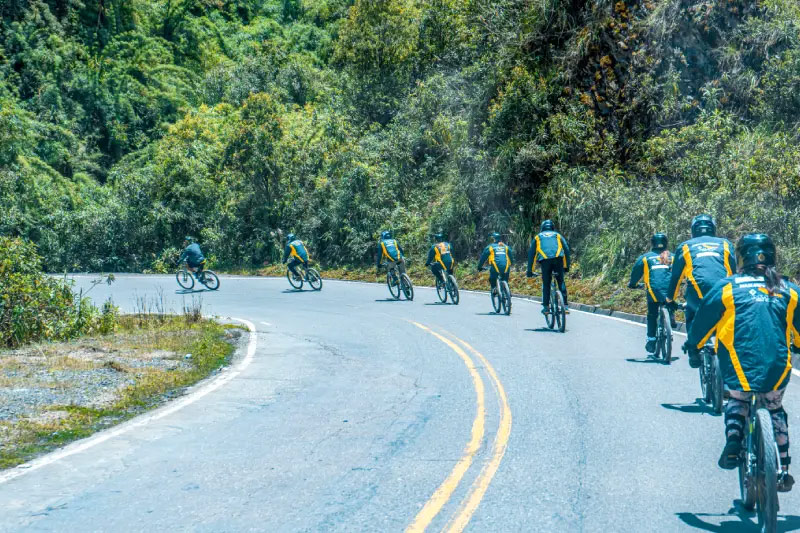
How to prepare yourself?
Have the right equipment
To get the most out of the Inca Trail, you must have the right equipment. All the equipment (tent, mat, etc.) is provided when you do the Inca Trail of 4 days and 3 nights, with the exception of the sleeping bag, which can be rented, and the backpack.
For the Inca Trail of 2 days and 1 night, you do not need equipment because the night is spent in a hotel in Aguas Calientes.
Here is a checklist for the Inca Trail:
- Backpack: a 30L-40L bag will suffice (covered with a rain poncho, even better, especially in the wet season, when it rains frequently)
- Sleeping bag (can be rented in Cusco if you want to bring your own, make sure it is suitable for temperatures down to -10C.
- Hiking shoes: remember to wear them as much as possible before the trek (ideally walking in conditions similar to the Inca Trail, with dust, rocks, slopes).
- Raincoat (even in the dry season)
- Water bottle and water purification tablets (you can buy them in Cuzco)
- Flashlight or headlamp
- Hat or cap
- Sunscreen (Important! the sun is very strong)
- Mosquito repellent
- Clothes: light clothing (t-shirts), warm clothing (pants, shorts, etc.) warm clothing (pants, long-sleeved shirt, gloves, scarf), several pairs of socks, a pair of gloves and a hat
- Hiking poles (you can rent them in Cuzco for 2-4 $ per day)
- Sandals (your feet will thank you after a day in shoes)
- Toilet paper.
- Lightweight travel towel (microfiber)
- Small soap and hand sanitizer
- Snacks (e.g. nuts, cereal bars)
- Camera (with extra battery, since there is no electricity, or an external battery if you only use your phone)
- First aid kit
- Valid passport (not a photocopy)
- Cash (for tips, snacks along the way)
Agencies hire porters for general equipment, but you have to carry your personal belongings (unless you hire an additional porter, up to 13-15 pounds maximum). So don’t overload your backpack, it will be much more pleasant!
Getting in shape for trekking
You don’t have to be an experienced hiker for the Inca Trail.
It is accessible to all, but you will need a certain stamina to endure 5 to 7 hours of walking per day, with sometimes significant temperature variations, numerous ascents and descents on an uneven trail.
In the gym, it is best to use the “step machine” (stepper, stair climber).
Outdoors, find a hilly, inclined area to practice walking with a 13-15 pounds backpack. This will be approximately the weight you will have to carry during the hike. You can put a water bottle, snacks, etc. in it.
But any type of physical activity and sport will be beneficial for your body. You don’t need to run a marathon, but set aside some time in your routine to make an extra physical effort if you are a rather sedentary person.
Beware of altitude
From about 7,545 feet above sea level, the body can start to feel the symptoms of altitude sickness as it suffers from lack of oxygen.
Cuzco is at 11,120 feet and it is common to feel some effects the first day: nausea, headaches, fatigue, nosebleeds.
Each person reacts to altitude differently and it is impossible to know in advance your degree of tolerance. Being in good physical condition may help, but it does not guarantee that you will not feel it.
That is why it is very important to plan at least 2 days in Cuzco or in the Sacred Valley before starting trekking or any other physically demanding activity. This is the best way to allow the body to acclimatize.
Avoid alcohol, tobacco and sleeping pills, and stay well hydrated. Do not hesitate to drink the coca tea offered at the hotel. It is not a miracle cure, but it helps!
Many hotels have oxygen bottles, so don’t hesitate to ask for them if you feel unwell. You can also buy a small bottle of oxygen in the pharmacies in Cuzco.
During the hike, remember to hydrate regularly. Walk at your own pace, it is not a race!
- To learn all about altitude sickness, I invite you to read my full article on altitude sickness.
Where to Stay in Aguas Calientes (Machu Picchu Pueblo)
- Municipal Camping: The cheapest option is camping in Aguas Calientes, just 20 minutes from downtown. For only 15 soles per tent, you get access to restrooms, cold showers, and a cooking area. Don’t forget to bring toilet paper and food beforehand. Not recommended from December to February due to heavy rains.
- Nativus Hostel Machu Picchu: A clean and colorful hostel with a rooftop terrace, happy hour bar, and restaurant. Great location away from the noise. Breakfast included. Dorm beds from just $14 USD and private rooms from $54 USD.
- Panorama B&B: Just a few steps from the market, train station, and Machu Picchu bus stop. Offers panoramic views of the river and surrounding mountains. A comfortable hotel with a warm welcome from Christophe, the owner, always ready to share local tips. From $101 USD per night.
- Casa del Sol Boutique Hotel 4*: Ideal for a romantic stay, with rooms offering river views and jacuzzi, spa, and pool access. Breakfast and dinner included at the Manko Restaurant. From $227 USD per night.
- Inkaterra Machu Picchu Pueblo Hotel 5*: This stunning eco-lodge on the banks of the Vilcanota River is the best option for a luxury stay in Peru. Set in a private 5-hectare garden home to 372 orchid species, 162 bird species, 108 butterfly species, and even a freshwater waterfall. Breakfast and dinner included. From $448 USD per night.
Where to Stay in Cusco
- Backpacker La Bo’M: One of the best hostels in Cusco. Founded by Sarah, a French expat, it includes a delicious crêperie next door. Perfectly located in the charming neighborhood of San Blas, it offers good Wi-Fi, a cozy vibe, and of course, amazing crêpes to start your day! Dorms from only $13 USD and private rooms from $33 USD.
- La Casona Real Cusco: For those looking for more comfort, this charming traditional-style guesthouse is located on a quiet street just steps from the Plaza de Armas. Impeccably clean, with hot water, great Wi-Fi, and a warm welcome. Breakfast included, all from just $76 USD per night!
- Hotel Tierra Viva Cusco San Blas: In the lovely San Blas neighborhood, this upscale hotel offers spacious rooms with very comfortable beds. Its modern décor with local touches and peaceful interior courtyard make for a relaxing stay. Buffet breakfast included. From $98 USD per night!
- Antigua Casona San Blas: A chic and intimate 4-star hotel in San Blas. It features very comfortable rooms, a warm atmosphere, and a tasteful blend of modern and traditional décor. Don’t miss their Piedra & Sal restaurant, one of Cusco’s best. Excellent breakfast included. From $250 USD per night.
- Palacio del Inka, a Luxury Collection Hotel: For a romantic stay in Cusco, this 5-star gem is housed in a spectacular colonial building across from Coricancha, with roots dating back to Inca times. Enjoy the indoor pool, gym, spa, bar, and restaurant. Delicious breakfast included. From $325 USD per night.
Book Your Flight at the Best Price
Planning a trip to Peru? To get the best deal on your flights, I recommend using this flight comparison tool, in partnership with Skyscanner.
It’s the easiest way to find the lowest prices for both international flights and domestic flights within Peru—ensuring you pay the best rate with no hassle!
Rent a Car in Peru
Renting a car is one of the best ways to explore Peru at your own pace and make the most of your trip!
Personally, I always use Booking.com Cars for a few key reasons:
- Easily compare prices from all major rental agencies in one place—finding the best deal has never been easier!
- Free cancellation on most bookings, so you can reserve with peace of mind.
- Better insurance coverage at a lower price than rental companies—saving you money with no extra effort.
Click the button below to find the best car rental deals in Peru:
Rent a car
Book entrance tickets and guided visits
Take a travel insurance
Book a tour
✈️ Book your flight
Traveling to Peru? These articles will help you!
Discover all my articles about Peru: All my tips and itineraries to plan your trip in one place!
You’re using Pinterest? Here is the picture to pin!
